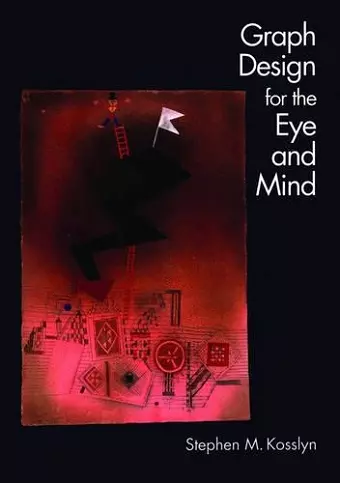Graph Design for Eye and Mind
Format:Paperback
Publisher:Oxford University Press Inc
Published:24th Aug '06
Currently unavailable, and unfortunately no date known when it will be back

Graphs have become a fixture of everyday life, used in scientific and business publications, in magazines and newspapers, on television, on billboards, and even on cereal boxes. Nonetheless, surprisingly few graphs communicate effectively. Many graphs fail because they do not take into account the goals, needs and abilities of the viewers. This book addresses the problems that arise when we attempt to convey information with visual displays such as graphs by presenting eight psychological principles for constructing effective graphs. These principles are solidly rooted in the scientific literature on how we perceive and comprehend graphs, and also in general facts about how our eyes and brains process visual information. The principles lead to hundreds of specific recommendations that serve as a concrete, step-by-step guide to constructing graphs that will be understood at a glance, help the reader decide whether a graph is an appropriate display for their information, and help the reader to choose the correct type of graph for a specific type of data and message. These psychological principles can be used to construct not only effective graphs, but also effective maps, diagrams, and other types of visual displays.
"Graphic displays get better and better and become more and more important in the modern information age. Graph Design for Eye and Mind is the best place to learn the art and science of graphic design and comprehension. Stephen Kosslyns fine book is engaging, wise, and exceptionally useful. Read it and you'll become an expert on graphic communication, and you'll learn a lot about how the mind and brain perform one of our species most remarkable skills."--Reid Hastie, Professor of Behavioral Science, University of Chicago "Finally, a book that connects the art of graph design to the science of visual perception. Stephen Kosslyn, an authority on mental imagery and perception, manages to boil complex research findings down into clear and concrete advice on how to design graphs that illuminate rather than obfuscate."--Keith Holyoak, Distinguished Professor of Psychology, UCLA "For nearly three decades, Stephen Kosslyn has developed an approach to effective and attractive graph design that rests extensively on scientific evidence. Not only does his treatment provide detailed guidelines for constructing graphs, it explains why these guidelines work, and why numerous pitfalls arise when they're not followed. Students learning to graph data for science, journalism, business, and other graph-intensive activities will benefit significantly from this book. It also offers a reference manual for skilled professionals who need to construct unfamiliar types of graphs on occasion."--Lawrence W. Barsalou, Professor of Psychology, Emory University "Graphic displays get better and better and become more and more important in the modern information age. Graph Design for Eye and Mind is the best place to learn the art and science of graphic design and comprehension. Stephen Kosslyns fine book is engaging, wise, and exceptionally useful. Read it and youll become an expert on graphic communication, and youll learn a lot about how the mind and brain perform one of our species most remarkable skills."--Reid Hastie, Professor of Behavioral Science, University of Chicago "Finally, a book that connects the art of graph design to the science of visual perception. Stephen Kosslyn, an authority on mental imagery and perception, manages to boil complex research findings down into clear and concrete advice on how to design graphs that illuminate rather than obfuscate." --Keith Holyoak, Distinguished Professor of Psychology, UCLA "For nearly three decades, Stephen Kosslyn has developed an approach to effective and attractive graph design that rests extensively on scientific evidence. Not only does his treatment provide detailed guidelines for constructing graphs, it explains why these guidelines work, and why numerous pitfalls arise when they're not followed. Students learning to graph data for science, journalism, business, and other graph-intensive activities will benefit significantly from this book. It also offers a reference manual for skilled professionals who need to construct unfamiliar types of graphs on occasion."--Lawrence W. Barsalou, Professor of Psychology, Emory University
ISBN: 9780195311846
Dimensions: 175mm x 251mm x 13mm
Weight: 632g
304 pages